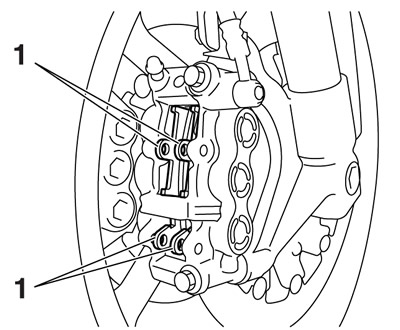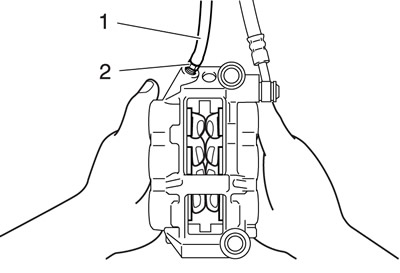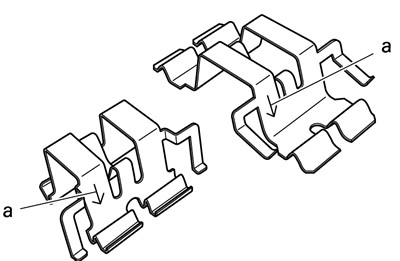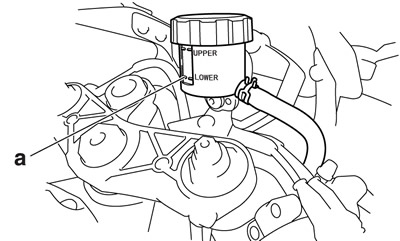1. Remove:
- Brake hose holder "1"
- Brake caliper "2"

2. Remove:
- Brake pad clips "1"
- Brake pad pins "2"
- Brake pad springs "3"

3. Remove:
- Brake pads "1"

4. Measure:
Brake pad wear limit "a"
Out of specification → Replace the brake pads as a set.
Brake pad lining thickness (inner) 4.5 mm (0.18 in).
Limit 0.8 mm (0.03 in).
Brake pad lining thickness (outer) 4.5 mm (0.18 in).
Limit 0.8 mm (0.03 in).

5. Install:
- Brake pads
- Brake pad springs
Always install new brake pads and a new brake pad spring as a set.
a. Connect a clear plastic hose "1" tightly to the bleed screw "2". Put the other end of the hose into an open container.

b. Loosen the bleed screw and push the brake caliper pistons into the brake caliper with your finger.
c. Tighten the bleed screw.
Bleed screw 5 Nm (0.5 m·kgf, 3.6 ft·lbf).
d. Install new brake pads and a new brake pad springs.
The arrow mark "a" on the brake pad springs must point in the direction of disc rotation.

6. Install:
- Brake pad pins
- Brake pad clips
- Brake caliper
Front brake caliper bolt 35 Nm (3.5 m·kgf, 25 ft·lbf).
7. Check:
- Brake fluid level
Below the minimum level mark "a" → Add the recommended brake fluid to the proper level.
Refer to "Checking the brake fluid level".

8. Check:
- Brake lever operation
Soft or spongy feeling → Bleed the brake system.
Refer to "Bleeding the hydraulic brake system".
